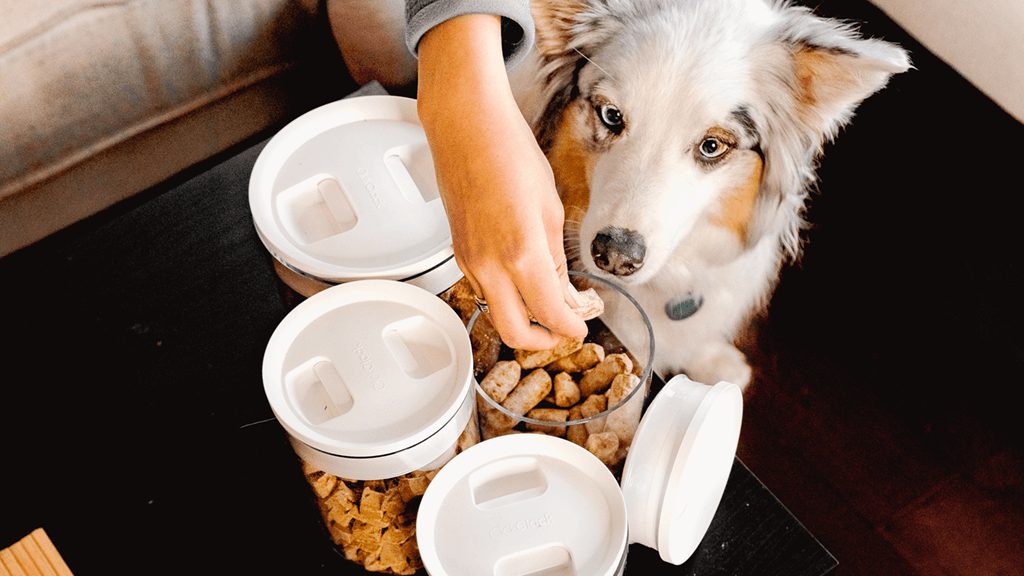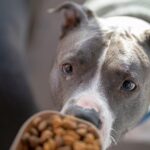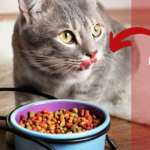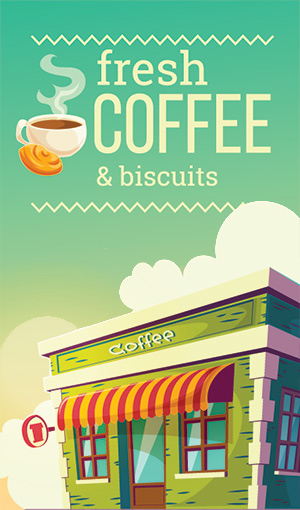
To choose the right food, it’s also essential to store it properly to maintain its quality and safety. Learning how to store dog food for your Pitbull is super important for a pet parent.
In this blog post, we’ll cover everything you need to know about storing dog food. It includes the factors to consider when choosing a storage container, the types of containers available, and how to properly store different types of dog food.
We’ll also provide tips and tricks for maintaining the freshness of your pet’s food. You also know the common mistakes to avoid.
By following these guidelines, you can ensure that your pet always has access to fresh and healthy food. It will keep them happy and healthy for years to come.
Overview of What the Post Will Cover
In this post, we will provide a comprehensive guide to storing dog food, covering the following topics:
- The Importance of Proper Dog Food Storage
- Factors to Consider When Choosing a Dog Food Storage Container, such as material, size, airtightness, durability, ease of use, and price.
- The Different Types of Dog Food Storage Containers available include plastic, metal, glass, resealable bags, and vacuum-sealed containers.
- How to Store Dog Food in Different Types of Containers, with tips and guidelines for each.
- Additional Tips for Storing Dog Food include cleaning and maintaining storage containers, avoiding pests and rodents, managing odors, and storing different types of dog food (wet, dry, etc.).
- There are Common Mistakes to Avoid when storing dog food to ensure the food remains fresh and safe.
Factors to Consider When Choosing a Dog Food Storage Container
Choosing the right storage container is essential for keeping your dog’s food fresh and safe. When selecting a container, there are several factors to consider:
Material
Dog food storage containers can be made from plastic, metal, or glass. Every substance has pros and cons of its own. Plastic containers are lightweight, affordable, and easy to clean, but they may not be as durable as metal or glass.
Metal containers are strong and durable, but they can be heavy and may rust over time.
Glass containers are sturdy and easy to clean, but they can be heavy and may break if dropped.
Size
The size of the container you choose will depend on the amount of dog food you need to store.
Consider how much food your dog eats in a week or month and choose a container that can hold that amount.
Air Tightness
To maintain the freshness of your dog’s food, it’s important to choose a container that is airtight.
This will prevent air and moisture from getting in and spoiling the food.
Durability
Look for a container that is durable and long-lasting, as this will save you money in the long run.
A container that is built to last will be able to withstand daily use and frequent cleaning.
Ease of Use
Choose a container that is easy to use and convenient for you. Look for features like handles, snap-on lids, and easy-to-open spouts.
Price
Consider the price of the container. You don’t want to overspend, but you also don’t want to cut corners on quality.
Look for a container that offers the features you need at a price that fits your budget.
Types of Dog Food Storage Containers
There are several types of dog food storage containers available, each with its own advantages and disadvantages. Here are some of the most common types:
Plastic containers
Plastic containers are a popular choice for storing dog food. They are inexpensive, lightweight, and simple to clean. However, they may not be as durable as other materials and can be prone to scratching and cracking.
Metal Containers
Metal containers, usually made of stainless steel, are a sturdy and durable option for storing dog food. They can be heavy, but they are also resistant to scratches and dents. They may be more expensive than plastic containers.
Glass Containers
Glass containers are a stylish and easy-to-clean option for storing dog food. They are also resistant to scratches and can be more durable than plastic containers. However, they are heavy and can be dangerous if they break.
Resealable Bags
Resealable bags are a convenient option for storing dog food. It is perfect for those who buy food in large quantities. They are easy to use and can be resealed after each use. They are not as durable as other containers and may not provide the same level of protection against pests and moisture.
Vacuum-Sealed Containers
Vacuum-sealed containers are a high-tech option for storing dog food. They use a vacuum to remove air from the container, which helps keep the food fresh for longer. They can also be expensive and may not be practical for everyone.
How to Store Dog Food in Different Types of Containers
Plastic containers: To store dog food in a plastic container, follow these steps:
- Choose a container that is made of high-quality, food-grade plastic.
- Clean the container thoroughly with warm, soapy water and let it dry completely.
- Pour the dog food into the container, being careful not to overfill it.
- Secure the lid tightly, making sure that it creates an airtight seal.
- Store the container in a cool, dry place away from direct sunlight, heat, and humidity.
- Avoid placing the container on the ground, as this can make it more vulnerable to pests and moisture.
Metal containers: To store dog food in a metal container, follow these steps:
- Choose a container that is made of high-quality, food-grade stainless steel.
- Clean the container thoroughly with warm, soapy water and let it dry completely.
- Pour the dog food into the container, being careful not to overfill it.
- Secure the lid tightly, making sure that it creates an airtight seal.
- Store the container in a cool, dry place away from direct sunlight, heat, and humidity.
- Avoid placing the container on the ground, as this can make it more vulnerable to pests and moisture.
Glass containers: To store dog food in a glass container, follow these steps:
- Choose a container that is made of high-quality, food-grade glass.
- Clean the container thoroughly with warm, soapy water and let it dry completely.
- Pour the dog food into the container, being careful not to overfill it.
- Secure the lid tightly, making sure that it creates an airtight seal.
- Store the container in a cool, dry place away from direct sunlight, heat, and humidity.
- Handle the container carefully to avoid breaking it.
Resealable bags: To store dog food in a resealable bag, follow these steps:
- Choose a bag that is made of high-quality, food-grade material.
- Pour the dog food into the bag, being careful not to overfill it.
- Squeeze out as much air as possible and seal the bag tightly.
- Store the bag in a cool, dry place away from direct sunlight, heat, and humidity.
- Be sure to check the bag periodically to make sure that it remains sealed.
Vacuum-sealed containers: To store dog food in a vacuum-sealed container, follow these steps:
- Choose a container that is designed for vacuum sealing.
- Pour the dog food into the container, being careful not to overfill it.
- Follow the manufacturer’s instructions for vacuum sealing the container.
- Store the container in a cool, dry place away from direct sunlight, heat, and humidity.
No matter which type of container you choose, be sure to clean it regularly to prevent bacteria and odors from building up.
Common mistakes to avoid when storing dog food
- Choosing the wrong type of container can affect the quality of the food and its shelf life. Make sure to choose a container that is made of high-quality, food-grade material and is suitable for the type of food you are storing.
- Overfilling the container can make it difficult to seal it properly. It can lead to air and moisture entering the container. The food may spoil more quickly as a result of this.
- It is important to store dog food in a cool, dry place away from direct sunlight, heat, and humidity. Avoid storing the food in areas that are exposed to extreme temperatures, such as a garage or attic.
- Failing to clean the container regularly can lead to the build-up of bacteria and odors, which can affect the quality of the food.
- Mixing old and new food can cause the food to spoil more quickly and may lead to digestive problems for your dog.
- Expiration dates are put on dog food packaging for a reason. Consuming expired food can be harmful to your dog’s health and may cause digestive issues.
Final Thought
Proper storage is essential for keeping your dog’s food fresh and healthy. When choosing a storage container, make sure to consider factors such as size, material, and ease of use.
Airtight containers made of high-quality, food-grade material are the best option for keeping the food fresh and preventing odors and pests.
It is important to store the food in a cool, dry place away from direct sunlight, heat, and humidity.
You should also avoid storing the food on the floor and make sure to clean the container regularly. Additionally, make sure to follow expiration dates and avoid mixing old and new food.
Hopefully you’ve found your solutions on how to store dog food for your Pitbull.
A little extra care in storing your dog’s food can go a long way in keeping them happy and healthy. More more such updates, follow our regular updates on MetoPet.

Patricia White is a pet enthusiast. With 10 years of experience in the pet industry, she brings a wealth of knowledge and expertise to MeToPet. She is honored to be a part of the MTP team and is dedicated to sharing her passion for pets with our readers.









